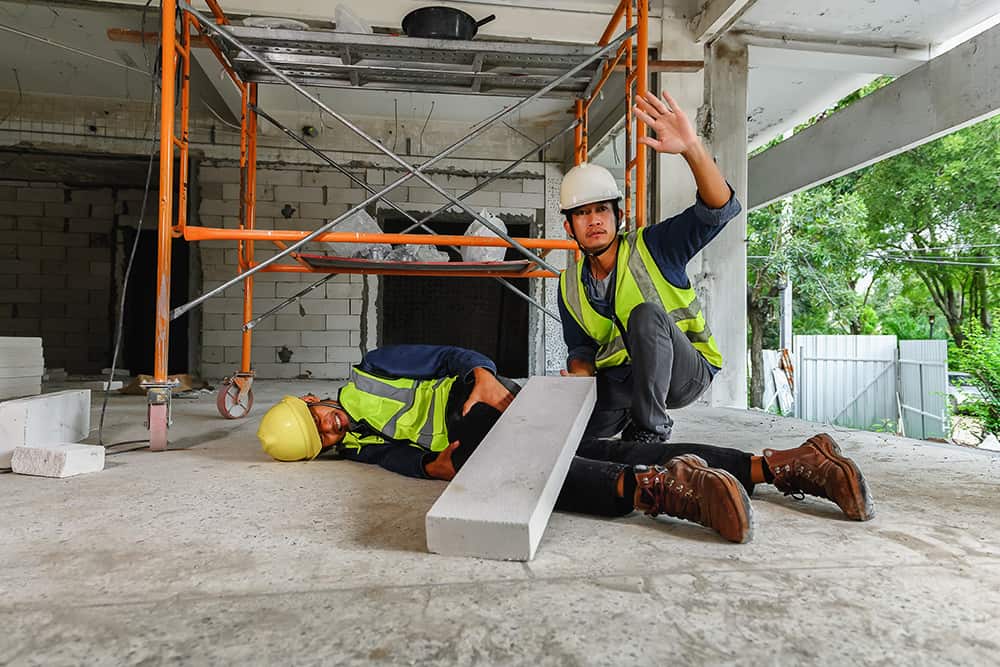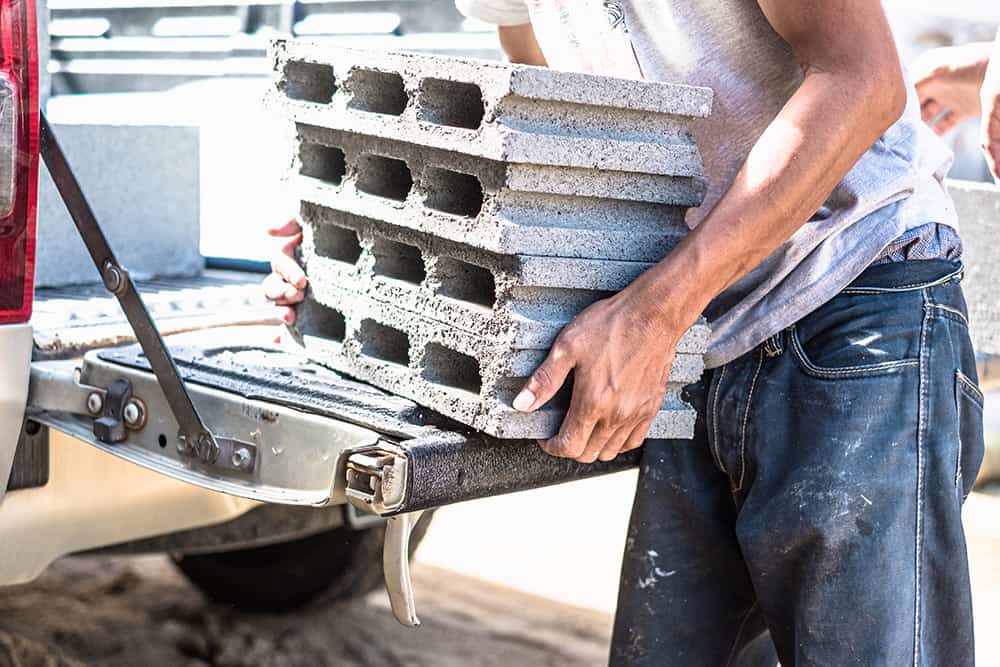
If you work in the construction industry, then it’s more than likely that manual handling tasks make up a large portion of your daily duties. Knowing how to correctly lift and move heavy loads can prevent accidents and ensure that your work site is compliant with the law.
Unfortunately, many construction workers and site managers do not pay enough attention to learning proper manual handling techniques. However, by following a few simple rules, you can drastically reduce the risk of injuries and accidents. Keep reading to find out how our manual handling tips for construction sites can help keep your workplace safe.
What the Law Says About Manual Handling
All workplaces in the UK must adhere to the guidelines stipulated in the Health and Safety at Work etc Act 1974. This legislation mandates that employers must create safe places of work for their employees. Employer duties include performing risk assessments, informing employees of all risks, developing a health and safety policy and providing relevant training.
Guidelines relating to manual handling tasks are specifically outlined in the Manual Handling Operations Regulations 1992. The main manual handling regulation under this legislation is that manual handling risks must be eliminated or reduced wherever possible.
This requires employers to try to avoid manual handling duties ‘so far as reasonably practicable’. If there is no other option, then manual handling tasks must be carried out as safely as possible.
What are the Potential Consequences of Bad Manual Handling Practices?
There were more work-related fatalities in the construction industry than in any other sector from 2021 to 2022, according to statistics released by the Health and Safety Executive (HSE). These statistics also reported 59,000 cases of non-fatal, work-related injuries, in the construction sector. An estimated 6% of these injuries were due to incorrect manual handling techniques.
Accidents and Injuries
Lifting or moving heavy objects, without using correct manual handling techniques, can cause a range of long or short-term injuries. Heavy loads that are carried incorrectly are more likely to be dropped, increasing the risk of fractures or broken bones.
The most common ailments caused by manual handling are work-related musculoskeletal disorders (WRMSDs). These injuries can cause damage to the muscles, the tendons or the nerves. Cartilage tears and strains of the arms, back, shoulders and neck are common.
Often, workers suffer from long-term WRMSDs such as tendinitis or carpal tunnel syndrome. More than 40,000 UK construction workers currently suffer from WRMSDs, as per figures from the HSE.
Practising good manual handling techniques can ensure that you and your staff avoid injuries and meet your obligations under health and safety legislation.

The Costs of Manual Handling
A failure to protect your employees from the hazard of manual handling can result in serious financial consequences.
In 2017, this was made clear when a welder had three of his fingers crushed by a 250-kilogram metal frame during a lifting operation in Norwich. An HSE investigation into the incident discovered that the company, Dantech Engineering Limited, was partly responsible for the incident: they had not taken sufficient measures to avoid the task or reduce the risk of injury.
As a result, the engineering firm was fined £20,000 and ordered to pay court costs of £884. Alongside these hefty fines were likely numerous indirect costs of reputational damage and increased insurance premiums.
An earlier manual handling case in 1999, involved a clerk employed by the Metropolitan Police. The clerk was required to move boxes of stationery weighing between 12 and 18 kilograms on a regular basis.
The clerk eventually suffered an injury to the soft tissue of her back. She then filed a court claim for compensation alleging that her employer had breached the Manual Handling Operations Regulations 1992. The clerk was awarded £384,497 as the court found that her employer had not completed a risk assessment and that no training or lifting equipment had been provided.
Top Manual Handling Tips for Contractors
- Assess the task before starting
- Avoid the manual handling tasks, if it’s at all possible
- Assess the task itself using TILE (see below)
- Plan any manual handling task carefully
- Follow good manual handling practices
- Make use of any lifting equipment or personal protective equipment (PPE)
- Make sure you have a steady footing before attempting a manual handling task
- Get a good, tight grip on the load
- Lift using your knees, not using your back
- Use a smooth lifting motion without sudden jerking movements
- Avoid stretching, twisting or leaning backwards
- Keep the load close to your body as you lift
- Reduce the weight of the load
- Ask co-workers to help you lift the load, if possible
- Disassemble the load into smaller, lighter parts, if possible
- Reduce the carrying distance
- Try and reduce the distance you have to cover when carrying the load
- Put the load down and rest, if you can, if carrying it over long distances
- Take care when placing the load
- Put the load down carefully, without dropping it, to avoid injuries to your feet
- If the load needs to be put in place, put it down and slide it into position
How to Assess Manual Handling Risks on Construction Sites
Performing a risk assessment is the first step toward reducing the risks associated with manual handling tasks on a construction site. A risk assessment is a systematic, thorough analysis of all potential hazards, associated with the task and present in the working environment.
When conducting a risk assessment of a manual handling task, the assessor should follow the HSE TILE process.
TILE requires consideration of the:
- Task
- Individual
- Load
- Environment
How to Apply TILE to Manual Handling Tasks
When applying the TILE process, an assessor must carefully consider the following:
- Nature of the task:
- What distance does the load need to be moved?
- Is the task repetitive?
- Does it require awkward movements to complete?
- Can the task be done by one or more people?
- Individual/s assigned to the task:
- The worker/s assigned to the task should be physically able to complete the task without the risk of injury.
- If available, PPE or lifting equipment should be provided to the worker/s
- Type of load:
- Assess the weight and height of the load as well as how it is placed
- Work environment:
- Provide good lighting and
- Clear the area of any obstructions
- Ensure the floor is stable and not slippery or wet
All risk assessments must be completed by a ‘competent person’ as defined by the HSE. A competent person must have received sufficient training and have sufficient experience and knowledge to be able to carry out the risk assessment properly. Many construction sites will appoint a dedicated Safety Manager whose role is to perform risk assessments when necessary.
Avoid Injuries with Manual Handling Training
Construction workers are at more risk of developing injuries from incorrect manual handling techniques than workers in almost any other industry. With the right training, your team can learn the right way to move heavy loads and how to avoid injuries associated with manual handling tasks.
Manual handling training will also ensure that you meet your obligations under the Manual Handling Operations Regulations 1992 and avoid any penalties for breaching health and safety legislation.
It’s easy to sign up for the manual handling courses offered by Human Focus. All of the health and safety courses can be completed in modules, online to fit around work schedules.
The manual handling training is industry specific like manual handling in the construction industry. The Human Focus manual handling courses are approximately 30 minutes in length and are accredited and recognised by leading UK health and safety authorities. Explore the entire range of Human Focus health and safety training today!



















































































































































































































































































































































































































































































